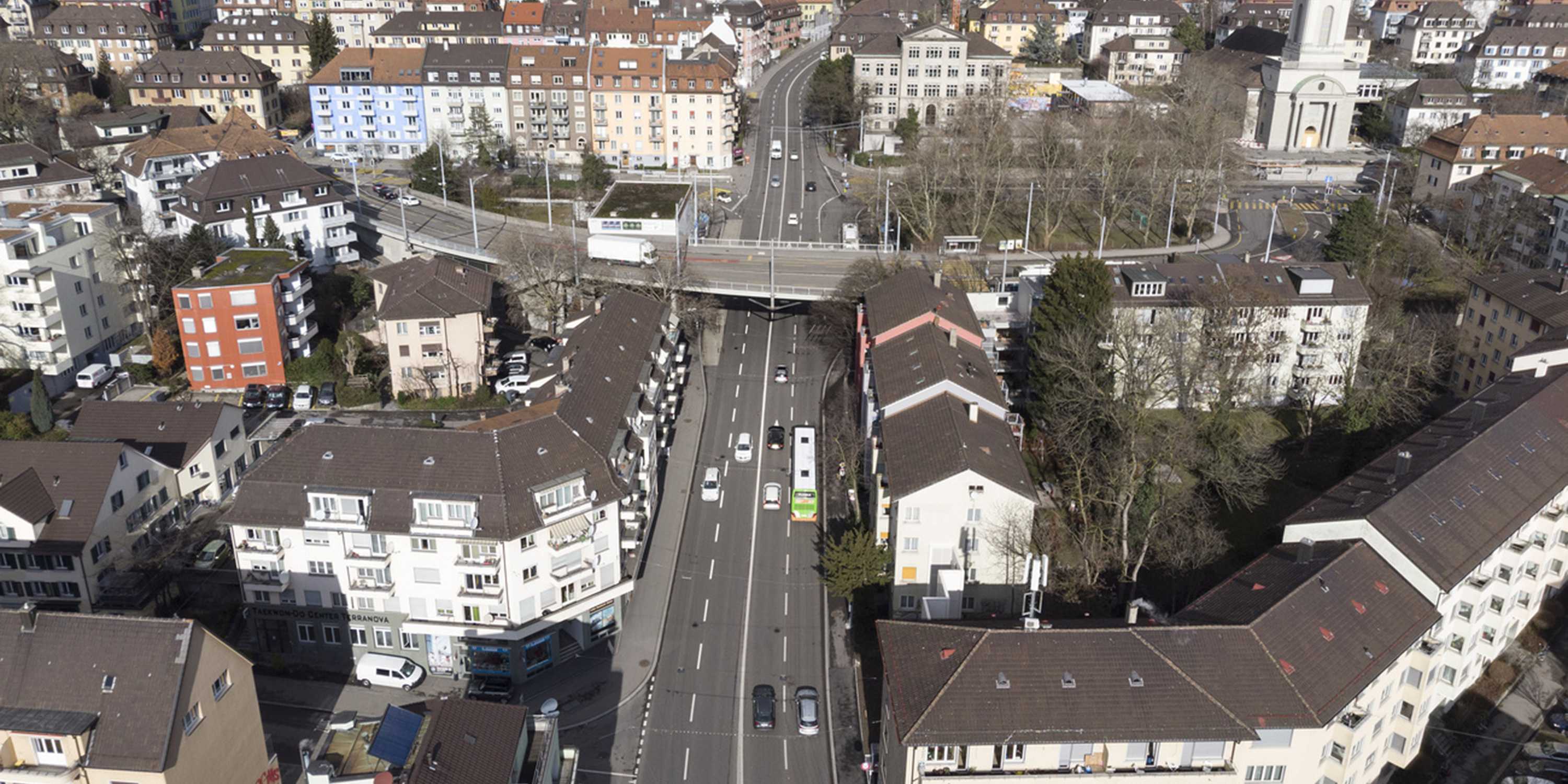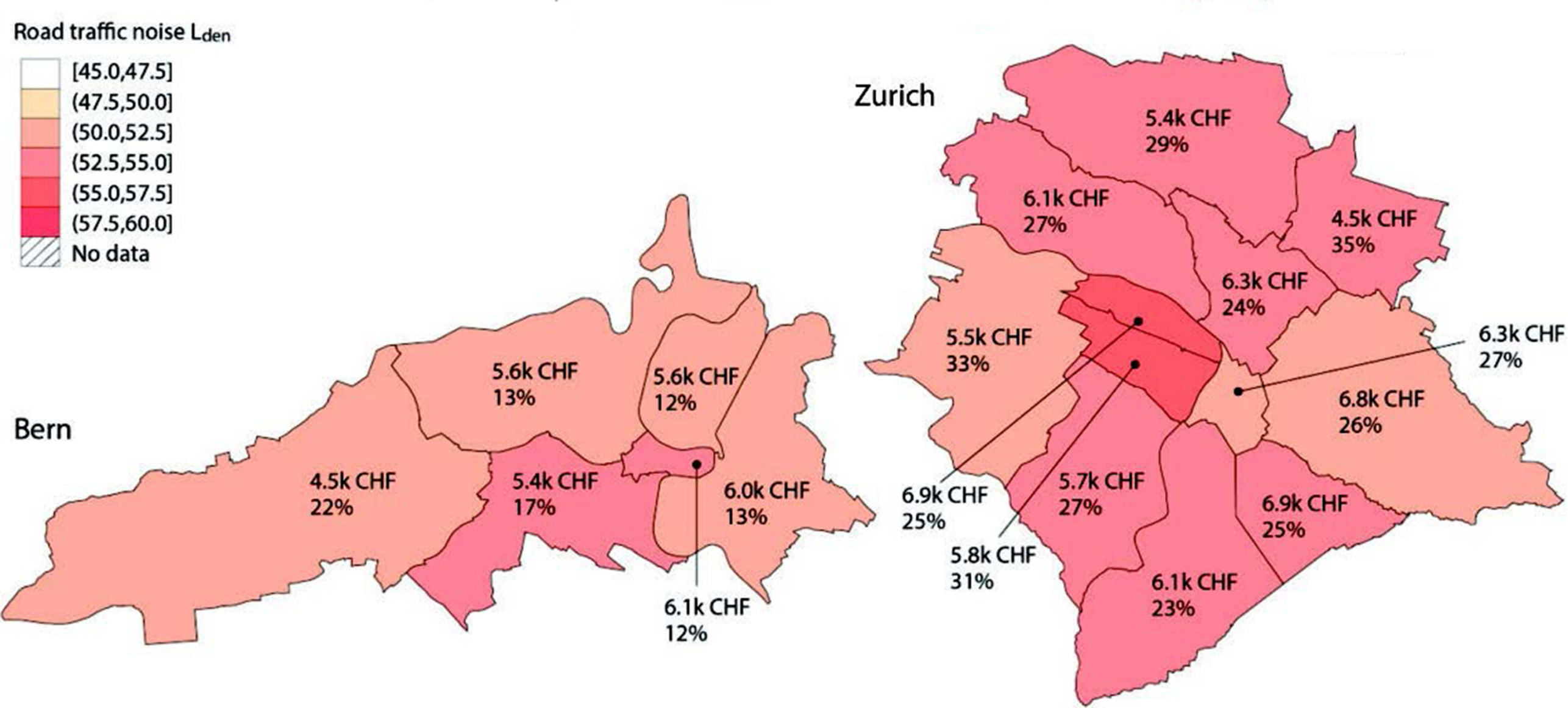In cities, those who earn more are better able to protect themselves against noise and its associated health risks. This is shown by two new ETH studies conducted in Bern, Zurich, Hannover and Mainz.

Too much noise is detrimental to health: it leads to sleep disorders, increased blood pressure and cardiovascular disease. Those who are constantly exposed to increased noise levels without protection must even contend with a shorter life expectancy.
In cities, this risk is considered particularly high. Busy roads are not only noisy; thanks to exhaust fumes, the pollutant levels recorded there are often elevated. Added to this is the aircraft noise from nearby airports. In Zurich alone, nearly half the population is exposed to traffic and aircraft noise levels that exceed the 53 and 45 decibel (dB) limits defined by the World Health Organization (WHO).
But how is this burden distributed across the population? Are all city dwellers equally affected, or do people with lower incomes suffer more from noise pollution? These are the questions addressed in two studies recently published by an international research group, led by ETH Zurich sociologist Andreas Diekmann and Ulf Liebe of the University of Warwick. With the participation of about 7,500 randomly selected residents of the cities of Bern, Zurich, Hannover and Mainz, the studies are the first to combine participants' subjective noise perception with measurements of noise exposure where they live as well as the size and equipment of their homes.
The similarity ends at the exterior wall
The results of the studies are surprising, because at first glance it seems noise pollution in the four cities is more equitably distributed than expected: "If we focus on the objectively measured noise pollution experienced by a household, there is only a very weak correlation with the residents' income," ETH professor emeritus Diekmann explains.
A wage difference of 1,000 Swiss francs has no perceptible effect on the noise exposure at the exterior wall of an apartment in Bern or Zurich. In all four of the cities studied, the income effects amount to far less than one decibel - differences that are barely perceptible. For comparison, a normal conversation takes place at about 50 dB, while the sound of breathing registers about 10 dB. And relocating from a Swiss city to the countryside will bring traffic noise down by 4 to 5 dB on average.

Those who earn more can afford better protection
But Diekmann and his coauthors don't simply analyse the noise level at the exterior wall; they also compare it with participants' subjective perception of noise inside their apartments.
One thing that stands out is that people with higher incomes like to live in noisy but attractive neighbourhoods, such as busy city centres. For example, the average noise pollution from traffic in Zurich's District 5 is higher than the city average, while the average monthly income of 6,900 Swiss francs is very high compared to the rest of the city.
However, since in most cases better-off city dwellers have larger and higher-quality apartments than people on lower incomes, they enjoy better protection against noise. According to Diekmann, this correlation shows up very clearly in the data: "Those who earn well can afford a larger apartment and don't have to put the bedroom on the street side. In addition, more expensive apartments often have better windows."
Environmental concerns lead to greater noise sensitivity
Moreover, the studies show that people's subjective perception of noise depends not only on the nature and size of their home but on their personal attitudes regarding environmental risks.
"People who care about the environment have a more critical attitude towards noise. They're more sensitive to it, and they feel disturbed more quickly and more often than people who are less concerned about environmental risks," Diekmann explains.
Noise protection as health policy
In many major Swiss cities, almost half the population lives in places that exceed the WHO noise limits. Diekmann therefore sees noise abatement as a form of health policy.
"Since people with lower incomes in particular are less able to protect themselves against noise, city policy should give high priority to traffic calming, noise-reducing construction measures and the promotion of high-quality soundproof windows," Diekmann says.
Reference
Diekmann A, Bruderer Enzler H, Hartmann J, Kurz K, Liebe U, Preisendörfer P. Environmental Inequality in Four European Cities: A Study Combining Household Survey and Geo-Referenced Data, European Sociological Review, 2022, 1-18, DOI: external page10.1093/esr/jcac028.
Preisendörfer P, Liebe U, , Bruderer Enzler H, Diekmann A. Annoyance due to residential road traffic and aircraft noise: Empirical evidence from two European cities, Environmental Research, DOI: external page10.1016/j.envres.2021.112269.






